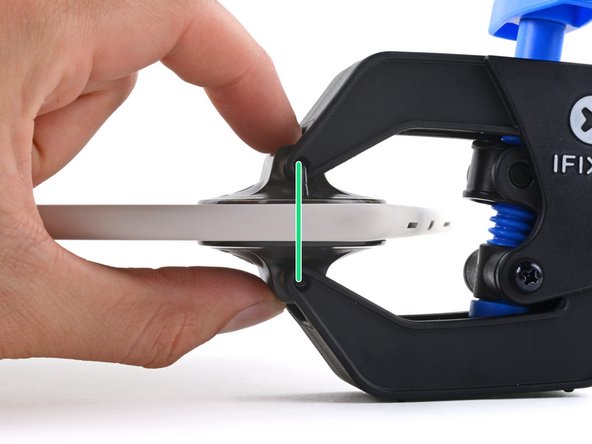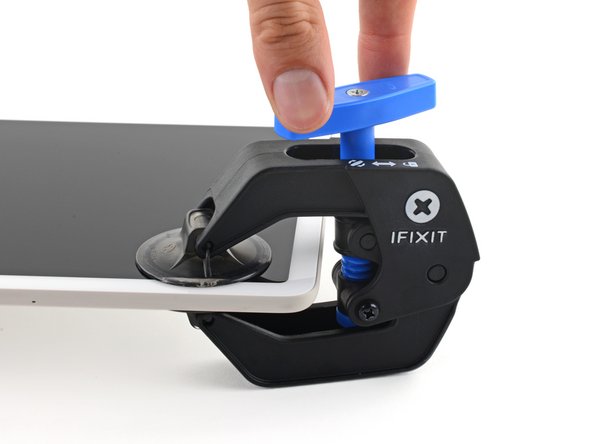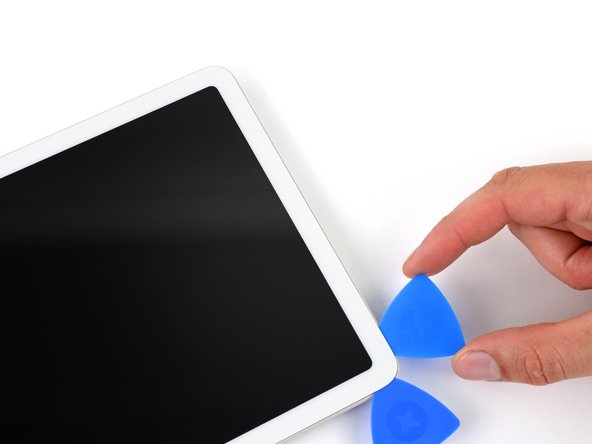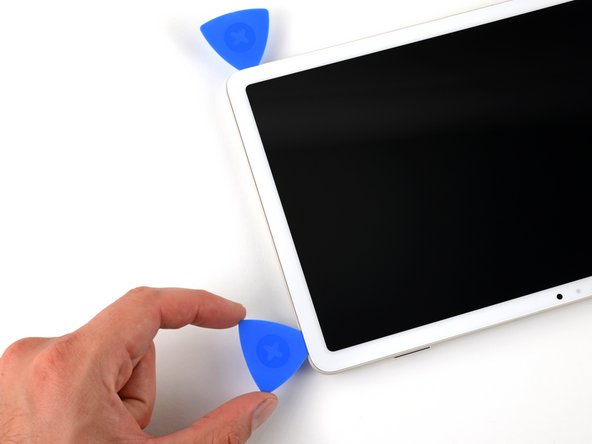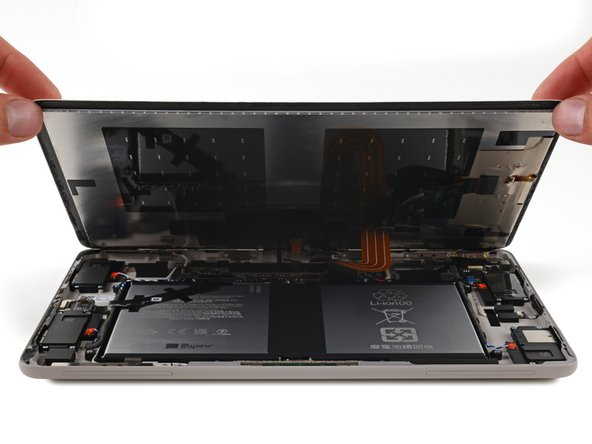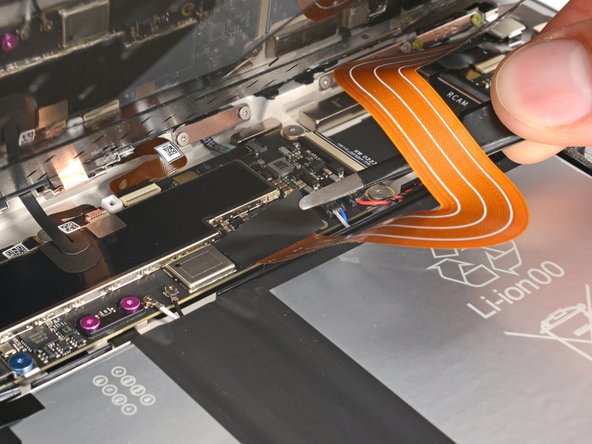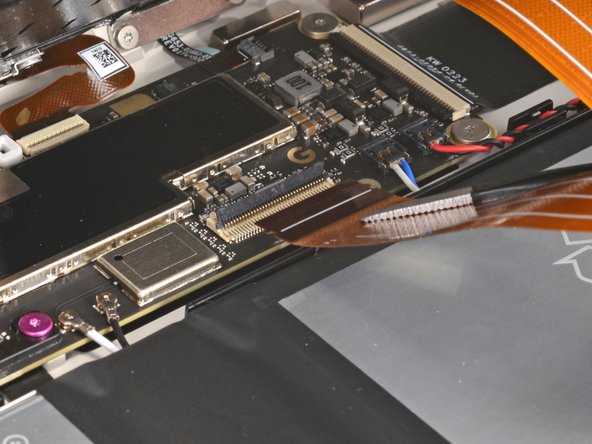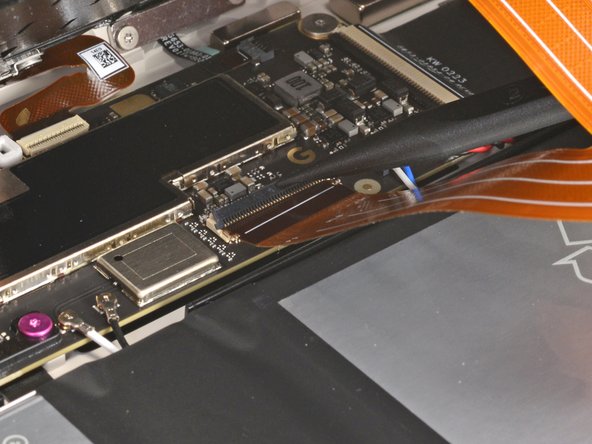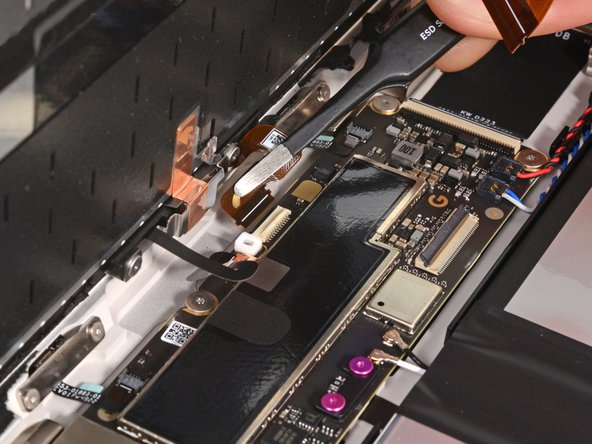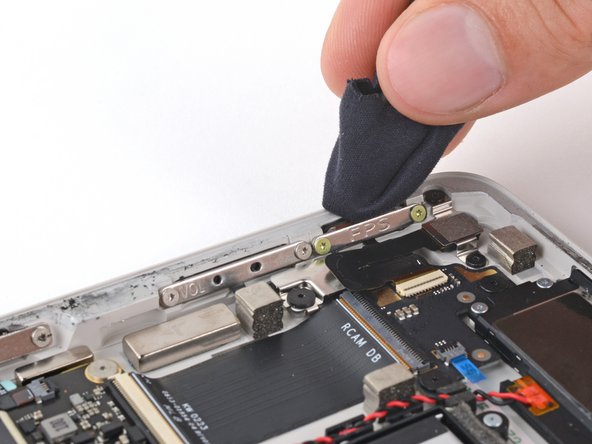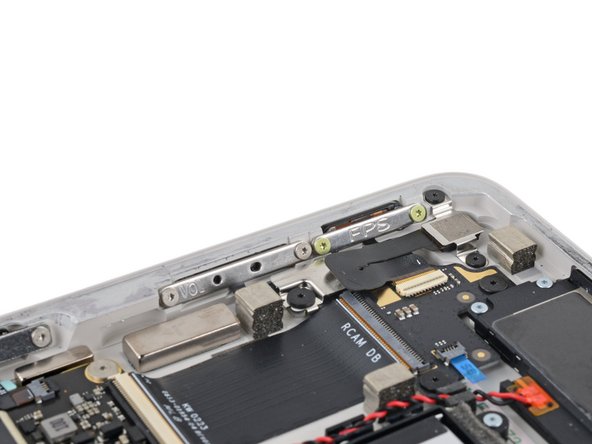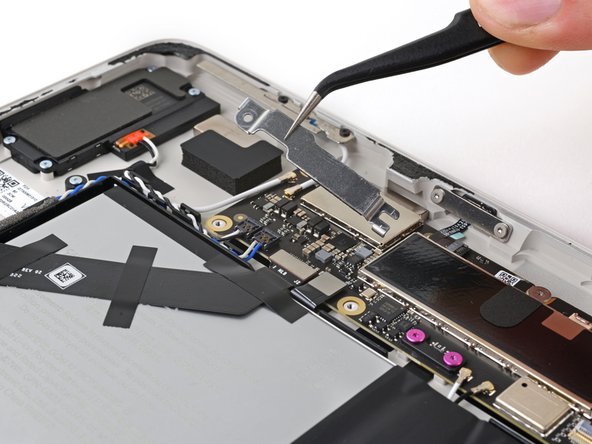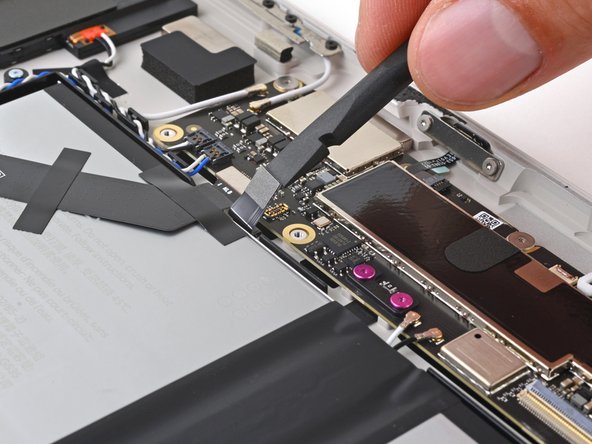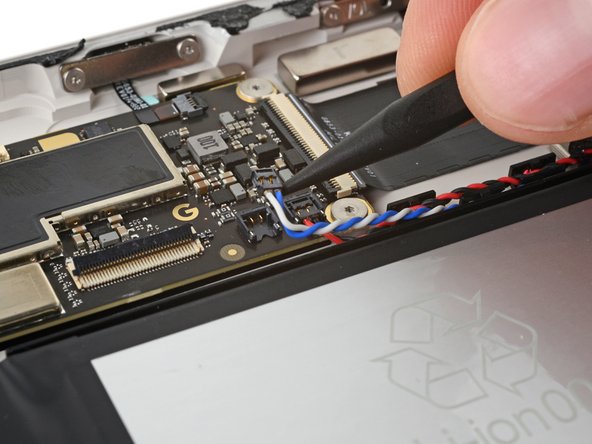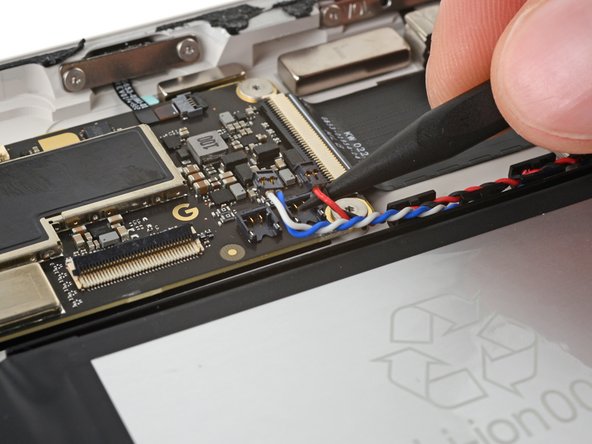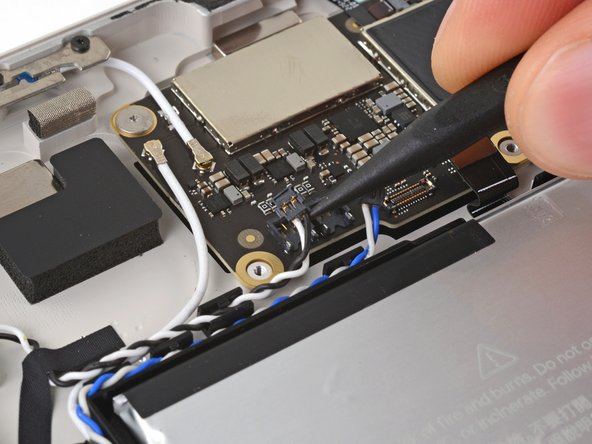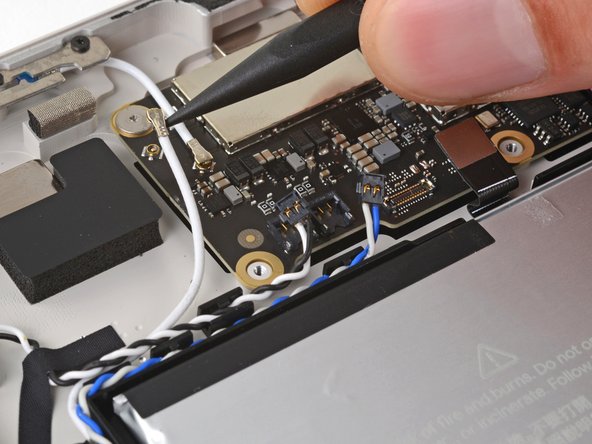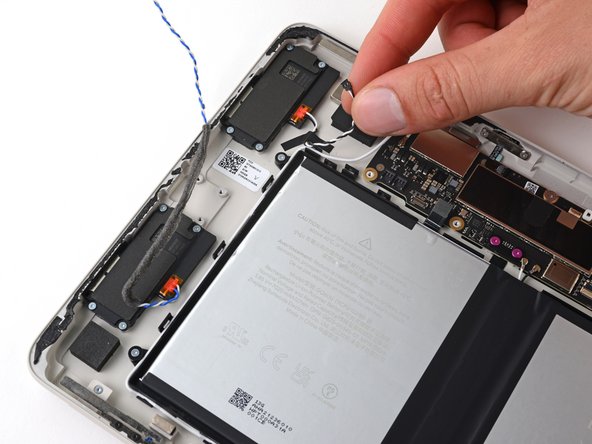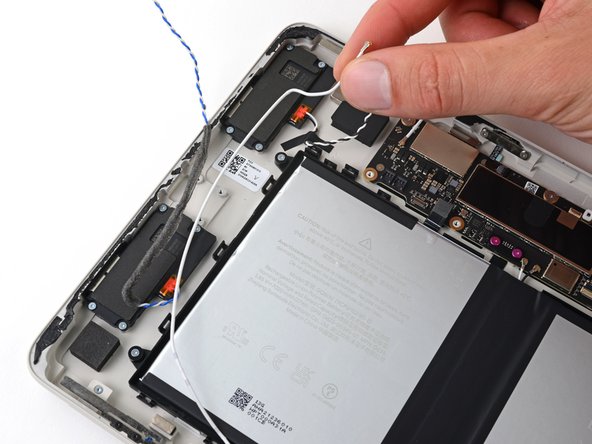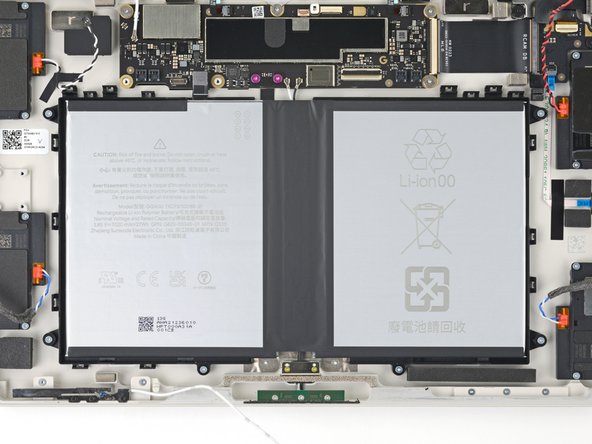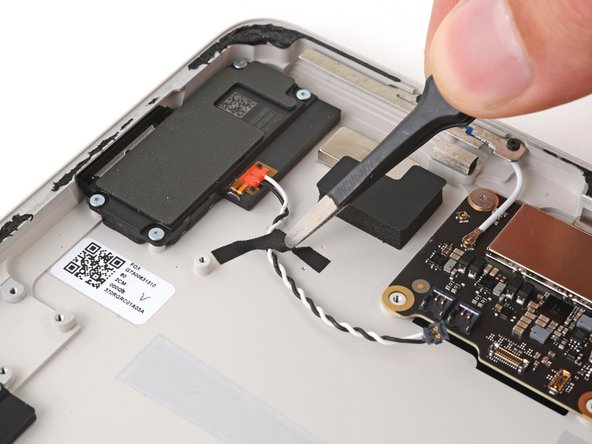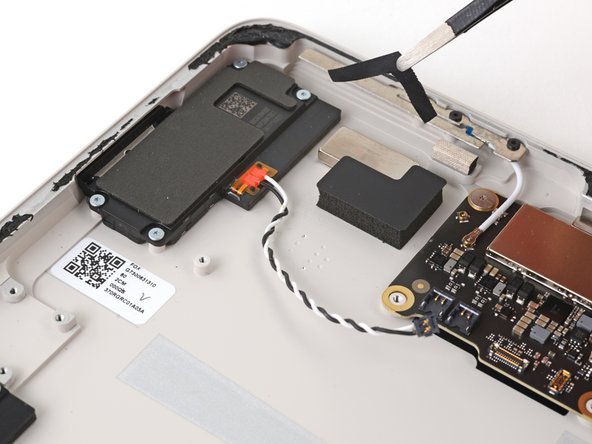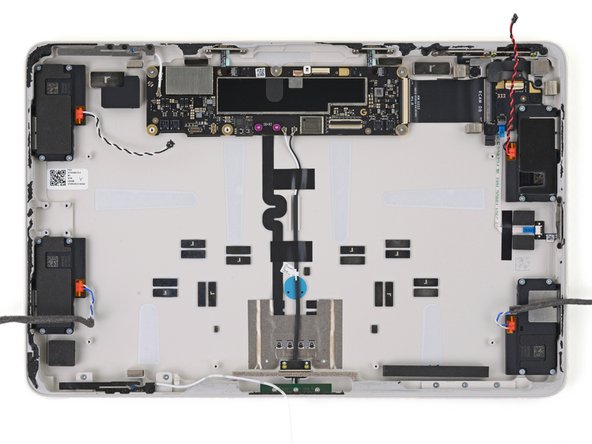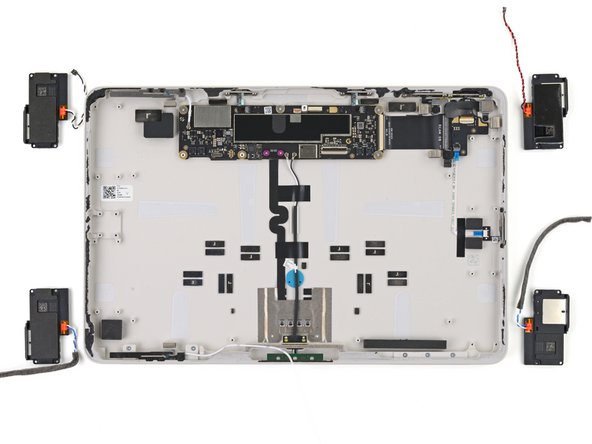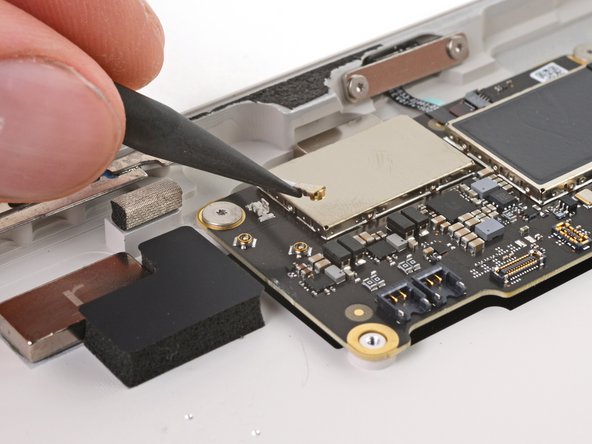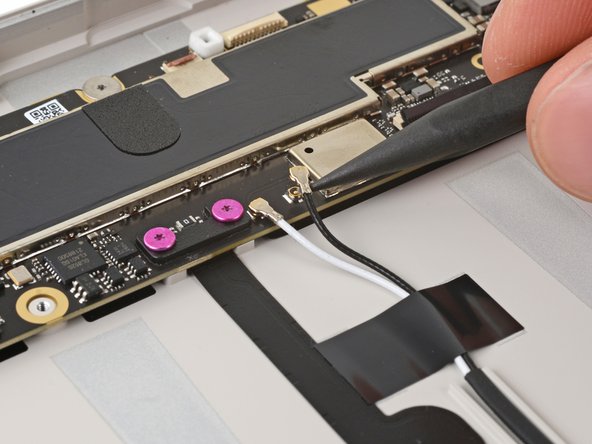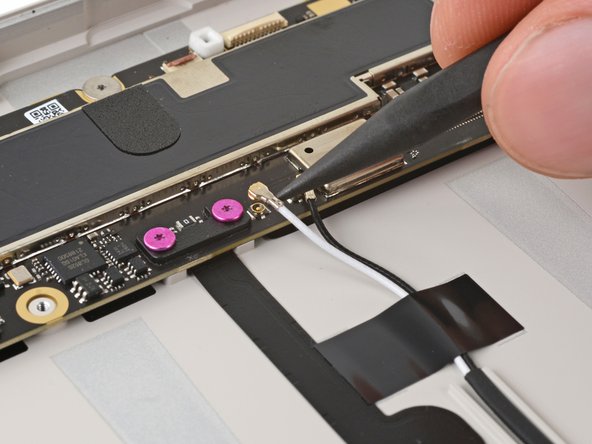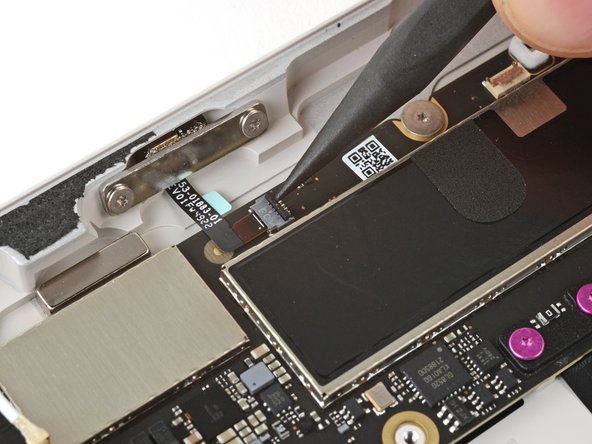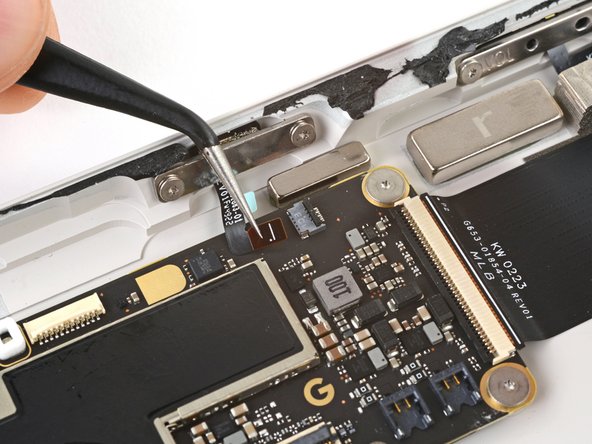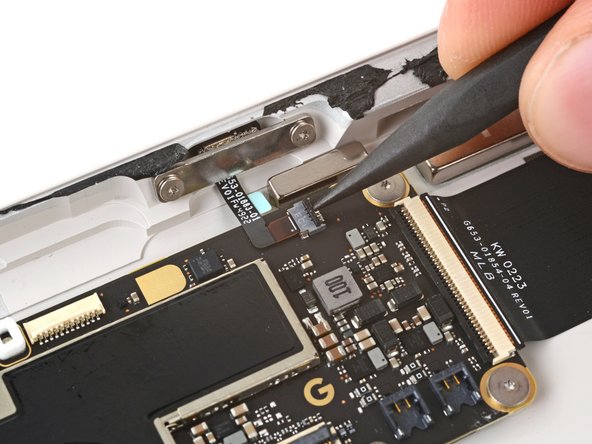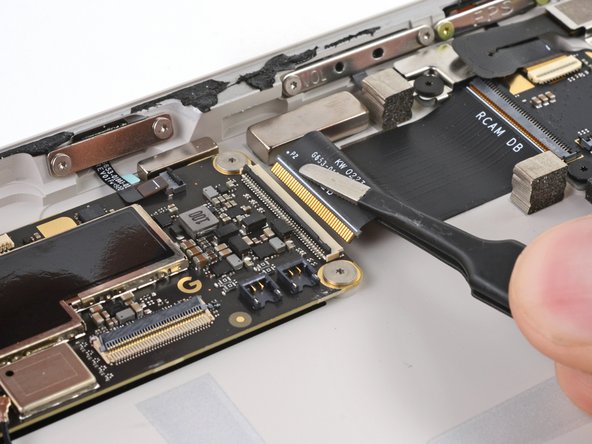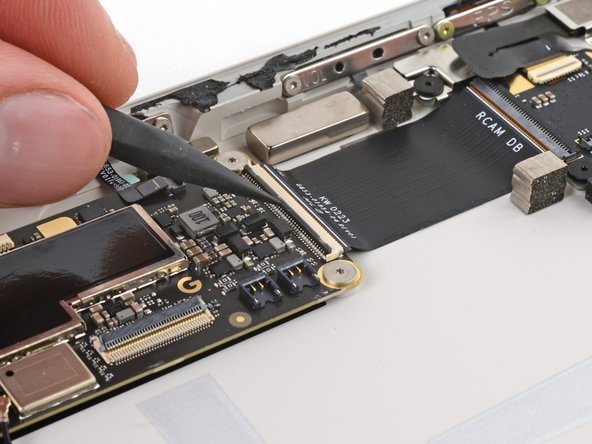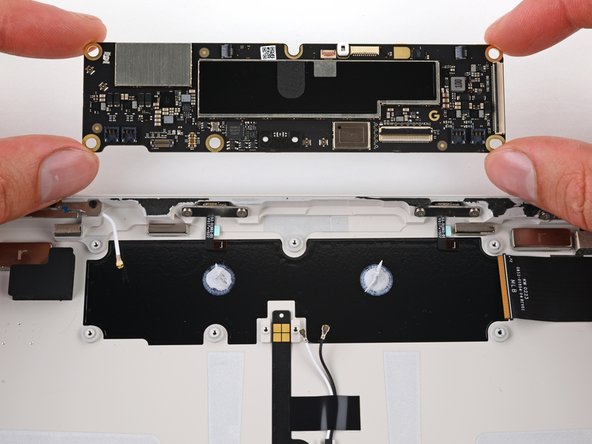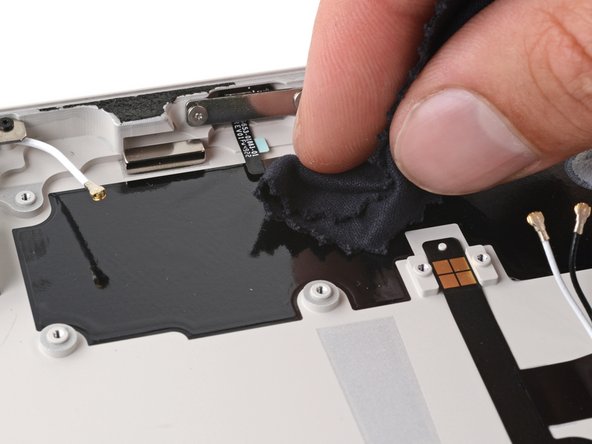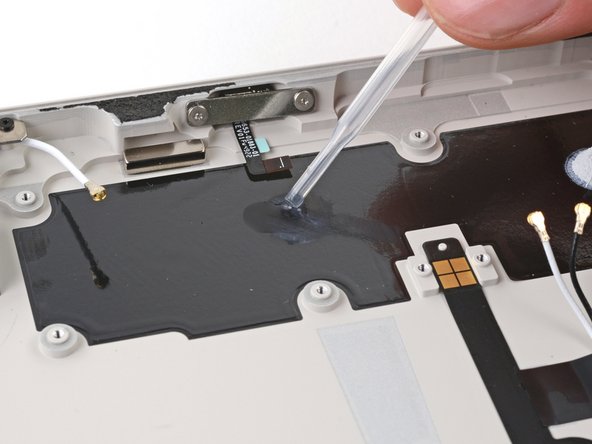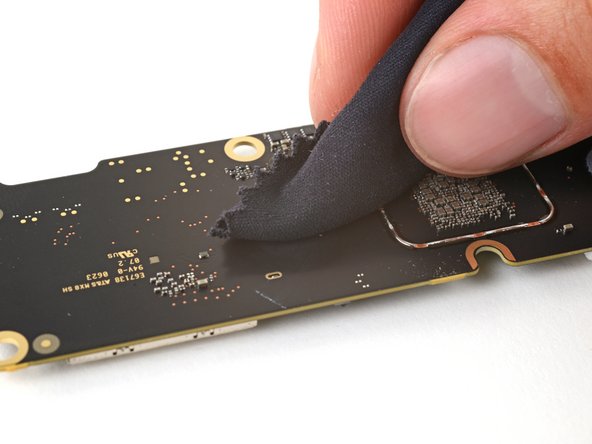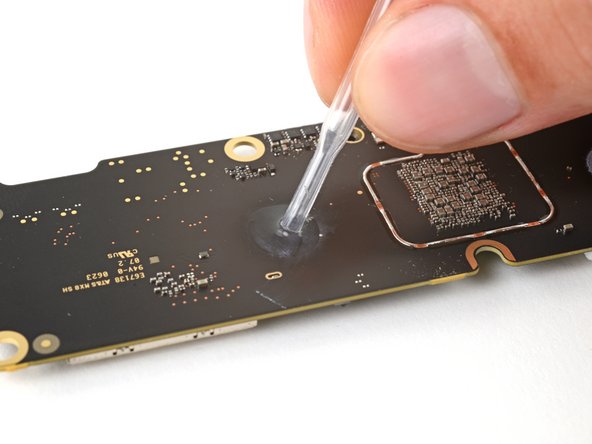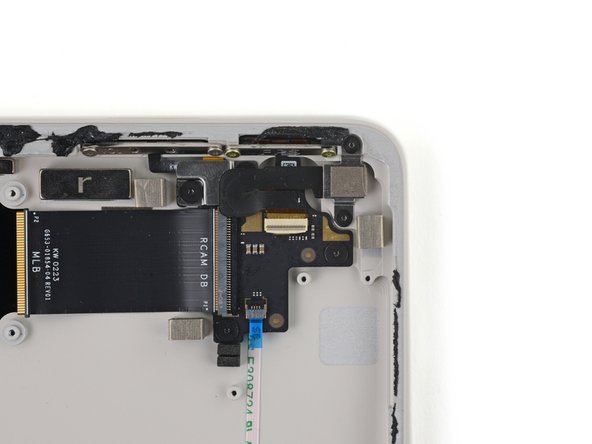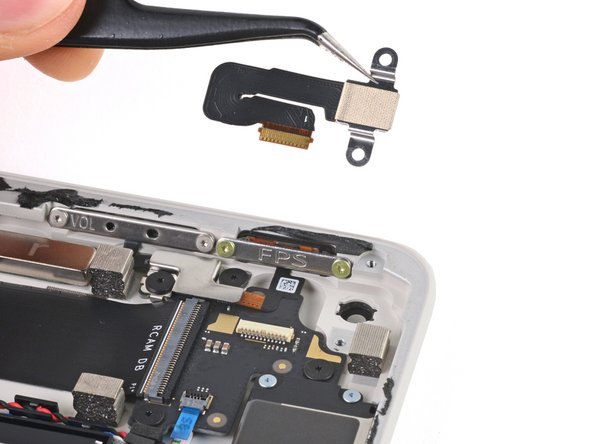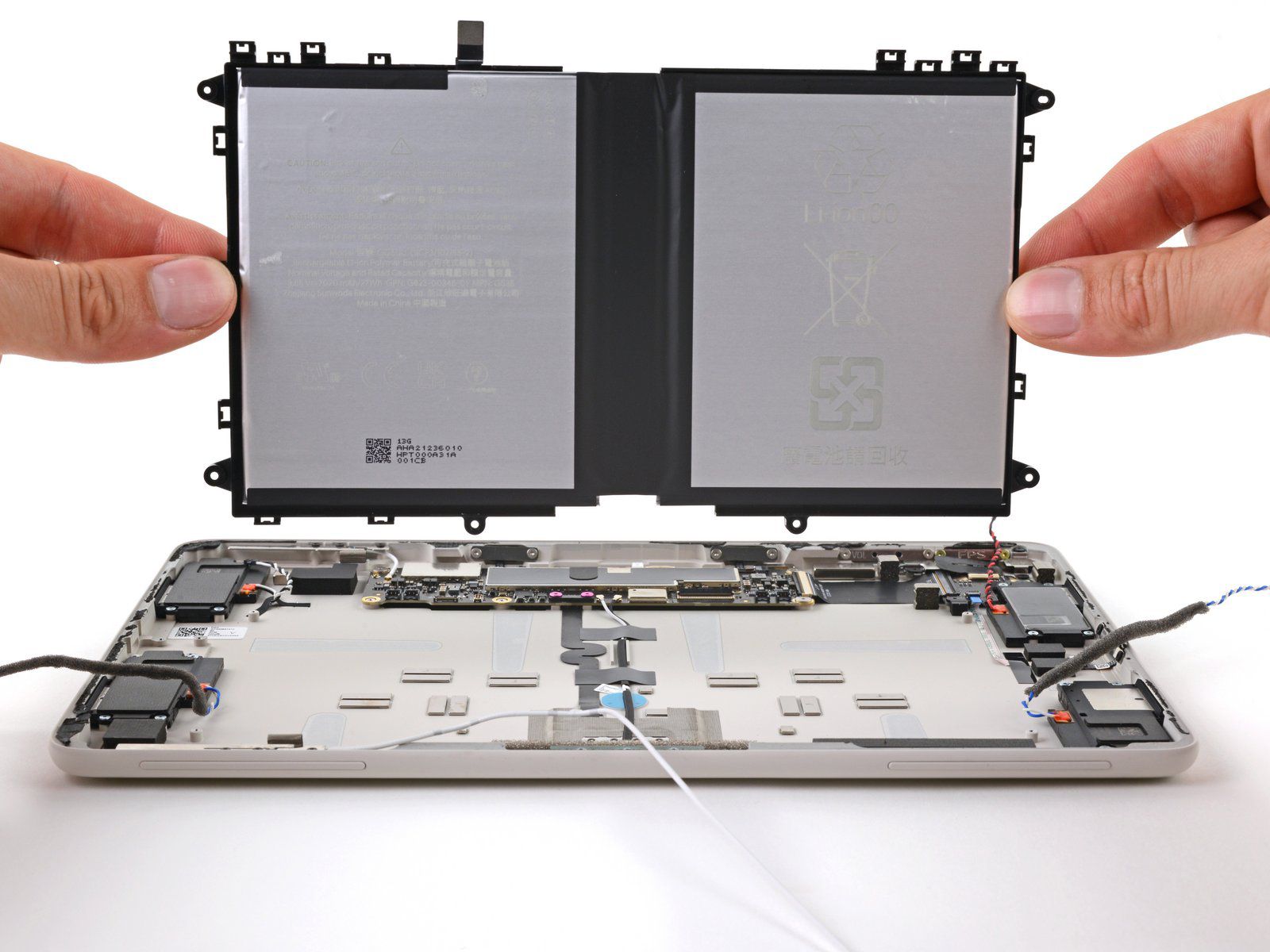Google Pixel Tablet Enclosure Replacement
Duration: 45 minutes
Steps: 57 Steps
This repair guide is brought to you by the awesome crew at Salvation Repair. While we’re not officially linked up with anyone else, we’re here to help you get your device back in action. If you ever find yourself in a bind, don’t hesitate to schedule a repair!
This guide walks you through replacing the enclosure in your Google Pixel Tablet with confidence and ease. You’ll need to remove the battery and its tray, so make sure you’re prepared, especially if your battery is swollen—grab a replacement and handle it safely. To finish things off, you’ll need thin, double-sided tape like Tesa 61395 Tape to secure the screen during reassembly. If you ever feel stuck or need an extra hand, you can always schedule a repair.
Step 1
Make sure to let that battery run down to empty before diving into this repair. A fully charged battery could be a real firecracker if it gets damaged!
Press and hold the power button and volume up button together—like you’re initiating a secret handshake—to bring up the power off menu.
– Disconnect all cables from your tablet and make sure it’s totally powered down. Let’s give it a little nap before we dive into the fix!
Step 2
– If your screen has seen better days and is cracked up pretty badly, grab some packing tape and lay down overlapping strips over the glass. This will keep you safe and make taking things apart a whole lot simpler.
Step 3
Need the full scoop on using the Anti-Clamp? We’ve got you covered! Check out the guide for all the details you need to get it right.
– Get ready for some fun with the Anti-Clamp! This nifty tool is here to make your opening procedure a breeze. If you’re going a different route, feel free to skip ahead three steps for another method.
– To get things started, pull that blue handle back to unlock the Anti-Clamp’s arms. It’s super easy!
– Carefully slide the arms over the top left corner, with one suction cup sticking to the back cover and the other on the screen. Nice and steady!
– Now, grab something to prop under your tablet so it sits evenly between the Anti-Clamp’s arms. You’re doing great!
– Give those suction cups a squeeze to create some serious suction power.
Step 4
– Get ready to lock those arms in place – pull the blue handle forward to secure them.
– Now, give the handle a couple of clockwise turns – about two full rotations, or until you see the suction cups start to stretch out.
– As the cups stretch, keep an eye on them to make sure they stay lined up vertically. If they start to slip, no worries – just remove the Anti-Clamp and add some tape to help the cups stick in place.
Step 5
Watch out for the heat! Your tablet’s screen and battery are pretty sensitive to temperature, so don’t let them get too toasty. Keep things cool and take your time!
– Give that top left corner of your screen a warm embrace with a hair dryer or heat gun until you see a little gap forming between the glass and the frame. It’s like the screen’s way of saying, ‘Hey, I need a break!’
– Once you’ve got that lovely gap, slide an opening pick right in there and let it do its magic.
– Next up, take a moment to remove the Anti-Clamp by pulling those handy tabs attached to the suction cups. They’re like little helpers giving you a hand!
Tools Used
Step 6
If you’ve already got an opening pick in place with the Anti-Clamp, feel free to skip ahead by two steps.
You can also give your trusty hair dryer, heat gun, or hot plate a whirl, but make sure to keep an eye on things! We don’t want to turn your screen or battery into a hot mess—just aim for it to be nice and warm to the touch.
– Flip your tablet around so the front camera is facing you, just like a selfie! Now, grab your trusty iOpener and warm up that top left corner of the screen (which is now your bottom right, but we’ll keep that a secret) for a solid three minutes of toasty goodness.
Tools Used
Step 7
– Grab a suction handle and stick it on the top left corner of your screen, right near that upper edge.
– Give that handle a firm pull upwards—steady and strong—until you see a little gap between the glass and the frame.
– Now, slide the tip of your opening pick into that gap you’ve created.
– Time to let go of the suction handle!
Tools Used
Step 8
The screen is stuck down with a bit of adhesive magic all around the edges. Keep an eye out for these spots as you peel away the sticky stuff:
– The top, bottom, and left edges are where the adhesive is the thickest, so you’ll need a bit of extra effort to work around them.
– The right edge? It’s a bit more chill with slightly thinner adhesive.
– Up by the front camera at the top, the adhesive is super thin and delicate, and those tiny cables connecting the screen to the frame need extra care.
Step 9
Keep your pick shy of going deeper than 7 mm—think of it as halfway between the pick’s tip and the cool logo!
– Gently glide your opening pick to the upper left corner of the tablet. You’re getting so close!
– Keep that pick in place to stop the adhesive from playing tricks on you and resealing itself.
Step 10
Feel free to bring in a hair dryer, a heat gun, or even a hot plate to lend a helping hand! Just remember to keep an eye on it—nobody wants to cause a meltdown for the screen or the battery.
– Warm up that trusty iOpener and place it on the left edge of your screen for a cozy two minutes. Let’s get that adhesive ready to party!
Tools Used
Step 11
Hey there! Just a friendly reminder: keep your pick no deeper than 7 mm, which is about halfway between the tip of the pick and that cool logo. Let’s keep everything safe and sound while we work on this repair!
– Time to get this screen opened up! Insert a second opening pick in the top left corner, nice and easy.
– Now, gently slide that pick down to the bottom left corner of the screen. This will help loosen the left edge adhesive, making it easier to get inside.
– Leave this pick in place for now – it’ll keep the adhesive from closing back up, making your life easier as you work through this repair. If you need help, you can always schedule a repair
Step 12
A hair dryer, heat gun, or hot plate can also do the trick, but keep an eye on things! Don’t let the screen or battery get too hot—nobody wants that! Take your time and stay chill.
– Warm up a heated iOpener and let it work its magic on the bottom edge of the screen for a solid two minutes.
Tools Used
Step 13
Hey there! Just a friendly reminder: keep your pick no deeper than 7 mm, which is about halfway between the tip of the pick and that cool logo. Let’s keep everything safe and sound while we work on this repair!
If your pick gets a little stuck, just give it a twist as you slide it to make sure that pesky adhesive lets go.
– Time to bring in some extra help – insert a third opening pick into the bottom left corner of your device.
– Now, carefully slide that pick all the way to the bottom right corner of the screen. This will help loosen the adhesive that’s holding everything together at the bottom edge.
– Leave this pick right where it is – it’s doing its job by keeping that adhesive from resealing, making your repair a whole lot easier.
Step 14
When heat is needed, a hair dryer, heat gun, or hot plate can be used – just be gentle to avoid overheating the screen or battery, we want to fix it, not fry it!
– Place a heated iOpener on the right edge of the screen and let it warm up for about two minutes. This will make the next steps a breeze!
Tools Used
Step 15
Be careful not to push your pick more than 5 mm along the right edge, or you might end up with a bigger problem on your hands!
For a visual guide, just measure 5 mm from the tip and give your pick a little mark with a permanent marker. You’ve got this!
– Pop a fourth opening pick into the bottom right corner.
– Gently glide your pick up to the top right corner to break that right edge adhesive free.
– Keep this pick in place to stop the adhesive from sticking back together.
Step 16
Feel free to whip out a hair dryer, heat gun, or hot plate, but watch out for overheating that screen or battery! We want to keep everything nice and toasty, not crispy.
– Warm up your iOpener and give the top edge of the screen a cozy two-minute hug.
Tools Used
Step 17
Hey there! Just a heads up: the front camera and sensor hang out right in the middle of that top edge. Stay sharp and don’t let your opening pick dive deeper than 3 mm (1/8 in) in this area. We want to keep everything in good shape!
For a visual guide, measure about 3mm from the tip and mark it with a permanent marker. This will help keep things neat and precise as you go along!
– To help avoid slicing too deep, stick a 6.3 cm (2.5 in) long strip of masking tape along the top edge, right over the front camera. It’s like giving your device a little safety cushion!
Step 18
– Pop in a fifth opening pick at the top right corner of your screen. You’re doing great!
– Gently slide your pick down towards the front camera. Stop when you’re about 3 cm (1.25 in) away from it. Almost there!
– Now, pull your pick out to about 3 mm (1/8 inch) deep and slide it past the front camera. Keep it smooth!
– Once your pick is 3 cm past the front camera, push it in up to 6 mm deep—about halfway between the tip and the Salvation Repair logo. Then, slide it over to meet your first pick in the top left corner. You’re nailing this!
Step 19
Be careful not to open the screen past 90 degrees. The front camera and sensor cables are pretty short, so if you stretch them too much, they could tear.
If the screen seems a bit stubborn, take a look around the edges for any sneaky spots where adhesive might be lurking. Use an opening pick to gently slice through those areas.
– Gently grab those bottom corners of the screen and give ’em a little lift.
– Tilt the screen open just enough to peek at the cables connecting it to the frame.
– When you’re putting it all back together, make sure to peel off those adhesive liners from the edges of the screen before pressing it firmly into the frame.
Step 20
Having trouble keeping the screen up? No worries! You can rest the tablet’s dock on the frame to prop it up, or if you’ve got a friend handy, ask them to hold it steady while you work your magic.
– For the next few steps, keep one hand on the screen with a slight tilt while you work your magic with the other hand.
– Grab those tweezers and carefully peel off the black tape from the screen cable connector. You’ve got this!
– As you start putting everything back together:
– If the old tape is looking worse for wear, swap it out with a fresh piece from your repair kit.
– Now’s the perfect moment to give your tablet a quick test run before sealing it up. Power it on and make sure it’s working like a charm. Just remember to turn it off before diving back into reassembly.
Tools Used
Step 21
– Grab your trusty spudger or maybe just a clean fingernail and gently lift up that little locking flap on the inside edge of the screen cable ZIF connector—it’s the side that has the cable, just so you know!
– Now, use some tweezers or your fingers to carefully pull the screen cable straight out of its cozy socket.
Step 22
– Grab your trusty opening pick and gently flip up that small locking flap on the outside edge (the one opposite the cable) of the front camera ZIF connector. You’ve got this!
– With a steady hand, use your tweezers to pull the cable straight out of its cozy socket. Easy peasy!
– When you’re putting everything back together, watch out for that cable—it’s a little shy and doesn’t like to bend too much. Use those tweezers to guide the connector into its socket while locking that ZIF connector flap securely at the same time. You’ve got the magic touch!
Tools Used
Step 23
– Time to get this repair started! Use the point of your trusty spudger (or a clean fingernail, we won’t judge) to gently flip up the tiny locking flap on the inside edge of the front sensor connector. It’s like a little door, and you’re the keymaster!
– Now, grab your tweezers and carefully pull the cable straight out of its socket. Think of it like a little cable elevator – you’re helping it find its way out!
Step 24
– Take off the screen.
Step 25
If you’re giving your screen a new lease on life, make sure to clean off that old adhesive from both the screen and the frame. It’s like a fresh start for your device!
– Get ready for some cleaning action! Let’s tackle those next two steps to refresh your frame and gear up for reassembly.
– Grab the flat end of your spudger or your trusty clean fingernail and gently lift an edge of that stubborn leftover frame adhesive until you can get a good grip on it.
– Now, use some tweezers or your fingers to peel away those larger chunks of adhesive from the frame.
– Keep the momentum going and repeat this process all around the frame’s perimeter until no big pieces are hanging around.
Step 26
Getting your screen ready for action? Don’t forget to give its edges and the frame a little TLC. A quick clean goes a long way!
– Grab a pipette or syringe, and fill it up with some high-strength isopropyl alcohol (we’re talking over 90% here). Apply a few drops to the edge of the frame – it’s time to get this cleaning party started!
– Now, wrap a microfiber or lint-free cloth around the flat end of your trusty spudger. Use it to scrub the frame until it’s squeaky clean. Don’t be shy with the isopropyl alcohol – add more as needed to keep things moving along smoothly.
Tools Used
Step 27
The Pixel Tablet loves its Torx Plus screws, but if you find yourself in a pinch, standard Torx bits will do the trick! Just remember to keep that downward pressure steady to avoid stripping those screws.
For the best fit with standard Torx bits, grab a T3. If it feels a bit wobbly, no worries – a T4 should get the job done!
– Grab your trusty Torx Plus 3IP driver and get ready to unscrew those two 2.6 mm screws holding down the battery, USB-C, and speakers connectors cover. You’ve got this!
– Now, gently lift off the cover and reveal the magic inside.
Step 28
To get that press connector snugly back in action, simply line it up with its socket and give one side a gentle press until you hear that satisfying click! Then, do the same for the other side. You’ve got this!
– Time to get this repair started! Use your trusty spudger to carefully pry up and disconnect the battery press connector. Take your time and work gently to avoid any damage.
Tools Used
Step 29
Be careful when connecting the screen cable – having the battery connected can cause a short circuit, which is a serious fire hazard. Let’s avoid any sparks flying and get this repair done safely!
– Let’s make sure you follow this step during reassembly to safely reconnect your screen and battery.
– Get creative! Prop up the bottom edge of your tablet on a sturdy box or something similar. Now, tilt that screen open and lean it back so it’s at a cool 90-degree angle.
– Time to reconnect the small front sensor cable ZIF connector. You’ve got this!
– Next, let’s plug in the large screen cable ZIF connector.
– Don’t forget to reconnect the battery press connector; it’s like giving your device a little power hug.
– Grab your Torx Plus 3IP driver and install those two 2.6 mm screws to secure the connector cover. Tighten it up nicely!
– Keep going with your reassembly, making sure all these cables are connected. You’re doing great!
Step 30
– Grab your trusty spudger and gently work the flat end underneath the USB-C port press connector to pry it up and disconnect it. You’ve got this!
Tools Used
Step 31
Be gentle with that battery – we don’t want any accidental damage with your tool during this step.
– Grab those blunt nose tweezers or just use your fingers to gently peel off the three strips of tape holding the USB-C port cable to the battery. Easy peasy!
– When you’re putting everything back together, feel free to reuse those tape strips if they’re still in decent shape. If they’re looking a bit worse for wear, just cut a few thin strips of electrical tape to keep that cable snug against the battery.
Tools Used
Step 32
– Grab your trusty Torx Plus 3IP driver and get ready to tackle those four 3.2 mm screws that are keeping the USB-C port in place. You’ve got this!
Step 33
– Gently lift the USB-C port out of its cozy little home in the frame and set it aside.
Step 34
Gently pry straight up on the cable’s neck, right where it meets the connector head. This will help you avoid causing any damage to the surrounding area.
– Grab that trusty spudger and gently lift up to disconnect the blue and white speaker cable connector from the right side of the logic board. You’ve got this!
– Next, it’s time to disconnect the red and black speaker cable connector. Easy peasy!
Tools Used
Step 35
– Gently wiggle those blue and white speaker cables free from their cozy clips at the top and right edges of the battery tray.
– Now, let’s give those red and black speaker cables a little tug to liberate them from their clips along the top of the battery tray.
Step 36
Gently lift straight up on the neck of the cables, staying as close to the connector head as you can. You’ve got this!
– Grab your trusty spudger and gently lift up the blue and white speaker cable connector from the left side of the logic board. Time to disconnect it with style!
– Next up, give that black and white speaker cable connector a little tug to disconnect it. You’re doing great!
– Now, let’s tackle the left antenna connector. Pry up the metal neck of the cable straight up from the logic board. You’ve got this!
Tools Used
Step 37
– Gently tug the speaker cables and antenna cable free from their cozy clips along the battery tray. You’ve got this!
Step 38
– Grab a Torx Plus 2IP driver and use it to unscrew the six 2.8mm screws holding down the battery tray. Easy does it!
Step 39
Don’t even think about pulling those battery cells out of the black tray. Let them be for now.
Under the battery tray, you’ll find six strips of stretch-release adhesive that keep it snugly in place, attached to the frame.
– Grab some tweezers and gently lift the six white pull-tabs on the battery tray’s stretch-release adhesive strips. You’ve got this!
Tools Used
Step 40
If you’ve lost any strips and they’re playing hide and seek with you:
Gently pull the adhesive strip at a low angle. Keep it smooth and try not to drag it across the components inside the frame. We believe in you!
– Alright, let’s get started! First, grab that adhesive strip’s pull tab and gently pull it out from beneath the battery tray.
– Keep pulling that adhesive strip until it’s all the way freed from the battery tray. Remember, patience is key—let it stretch a bit!
– Now, repeat this for all six of those adhesive strips. You got this!
– Grab your trusty spudger and press down on the foam piece near the lower right strip while you pull. Teamwork makes the dream work!
– Next up, take a pipette or syringe and drop a few drops of super-concentrated isopropyl alcohol (over 90%) under the battery tray sections where those strips might have let you down. Give the tablet a little tilt to help it slide underneath.
– Hang tight for two minutes, then use that spudger to gently pry up the battery tray. You’re doing great!
Tools Used
Step 41
Avoid using a battery that’s bent, broken, or otherwise looking worse for wear—you’re better off keeping yourself safe and sound!
– Carefully take out the battery, keeping it connected to its tray, from the frame. Easy peasy!
– When it’s time to put everything back together, and you have a shiny new battery, peel off the liners from the six adhesive strips on the bottom of the battery tray. Then, press it down firmly. Use the six screw posts to align the tray just right with the frame. You got this!
Step 42
– Grab your tweezers (or fingers, no judgment here) and gently peel away the tape holding the black and white speaker cable to the enclosure. Easy does it!
– When you’re putting things back together, if the tape is still in good shape, feel free to reuse it. If it’s seen better days, just snip off a fresh little strip of electrical tape to keep the cable snug against the enclosure.
Tools Used
Step 43
For these screws, a T3 Torx bit is your best buddy. If it feels a bit snug, grab a T2 Torx bit and give it a go.
– Grab your trusty Torx Plus 2IP driver and get ready to work some magic! Carefully unscrew the sixteen 2.7 mm screws that are holding those four speakers in place. You’re doing great!
Step 44
– Pop those speakers out like they’re hot from the grill!
Step 45
– Grab your trusty spudger and gently pry the metal neck of the left antenna connector straight up to disconnect it. Easy peasy!
Tools Used
Step 46
– Unplug those pesky lower two antenna cables.
Step 47
– Time to set that cable free! Flip up the small locking flap on the outside edge of the left ZIF connector, and gently pull the cable straight out of its socket.
Step 49
The cable is stuck to the enclosure. If you’re having a tough time disconnecting it, try peeling it away from the frame near the connector with a gentle touch.
– Time to get that cable out – use the tip of your trusty spudger or a clean fingernail to gently flip up the wide locking flap on the outside edge of the interconnect cable ZIF connector. It’s like opening a little door!
– Now, grab those blunt nose tweezers and carefully pull the cable straight out of its socket. Easy does it!
Step 50
– Grab your trusty Torx Plus 3IP driver and let’s tackle those six screws holding the logic board in place:
– Four tiny 2.2 mm screws
– Two slightly bigger 3.2 mm screws
Step 51
Keep an eye on that little black washer at the bottom edge of the logic board! If it decides to take a tumble, just remember to pop it back in place before you screw the logic board down. You’re doing great!
– Gently lift the bottom of the logic board and tilt it away from the frame to break free from the thermal paste.
– Slide the logic board down toward the bottom of the tablet, making sure to clear those ZIF cables at the top of the frame.
– Carefully remove the logic board from its place.
– When putting things back together, keep those ZIF cables out of the way as you slide the logic board back into position.
Step 52
When reusing your enclosure, just a heads up: handle that graphite film with care! We don’t want any tears ruining your groove.
If you’re planning to reuse your frame, it’s time to give it a little spa treatment by cleaning off that thermal paste. If you’re going with a new frame, feel free to skip ahead one step.
– Grab the flat end of your spudger and gently scrape off any big chunks of thermal paste. Go slow and steady!
– Next, take a pipette or syringe and apply a couple of drops of high-concentration isopropyl alcohol (over 90%) to the leftover paste. It’ll loosen things up nicely.
– Now, use a microfiber or lint-free cloth to give the frame a good wipe-down. Make it shine!
Tools Used
Step 53
– Carefully scrape off the big chunks of thermal paste from the logic board. No need to rush, take your time!
– Drop a couple of splashes of isopropyl alcohol onto that pesky thermal paste residue.
– Give the logic board a good wipe-down until it’s sparkling clean.
– When it’s time to put everything back together, check out this guide to apply fresh thermal paste to the logic board.
Step 54
– Grab your trusty spudger or a clean fingernail, and gently lift that tiny locking flap on the outer edge of the rear camera ZIF connector. You’re doing great!
– Now, with the finesse of a pro, use some blunt nose tweezers to carefully pull the cable straight out of its cozy socket. Easy peasy!
Step 55
– Grab your trusty Torx Plus 3IP driver and unscrew the two 2.2 mm screws holding the rear camera bracket in place. Easy peasy!
Step 56
– Take out the rear camera with care.
Step 57
– Time to put everything back together! Just retrace your steps, and you’ll have your device up and running in no time.
– Got some old tech lying around? Don’t just toss it! Make sure to drop it off at an R2 or e-Stewards certified recycler.
– If things didn’t go smoothly, don’t sweat it! Give some basic troubleshooting a shot, and if you’re still stuck, you can always reach out to our awesome community for advice.
–
Success!






